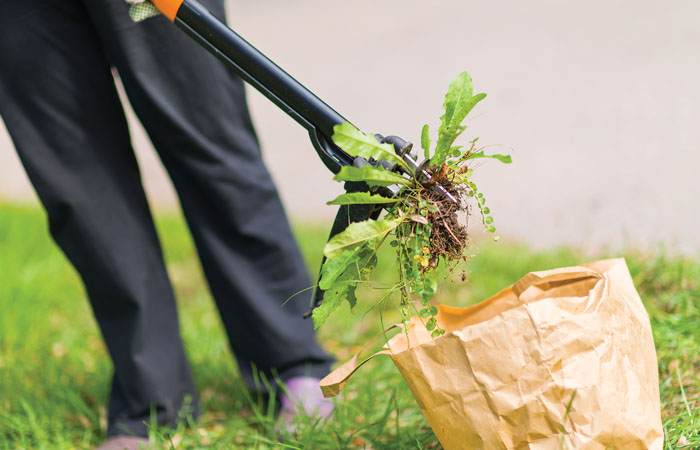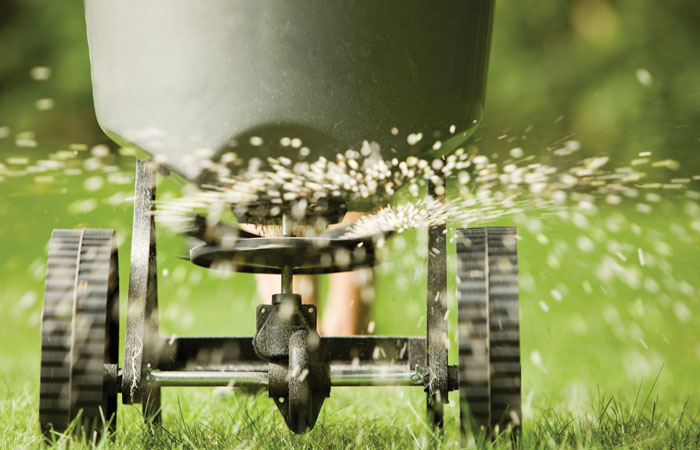Since 1970, we have celebrated Earth Day on April 22 each year. That makes April the perfect month to talk about the connections between golf and the environment. Many golf courses, including my home course TPC Four Seasons Golf and Sports Club Dallas at Las Colinas, conduct Earth Day activities that show their deep commitment to environmental stewardship. Golf has always had a link to the environment; in fact, many legendary golf courses (Pebble Beach, Pinehurst etc.) are amazing green spaces, providing habitat for a variety of plants and wildlife and even in urban areas where habitat is scarce. To give you a better perspective, let’s take a look at some of golf’s environmental strengths and ways you can carry these on-course concepts and skills to your home.
The Connection between Turf and Cleaner Water
If you close your eyes and picture a golf course, the first image you likely see is a flagstick/cup surrounded by an expanse of green turf and clear water, perhaps a pond, stream or even an ocean. You may not even realize the relationship between the turf and the water. Actually, turf is one of nature’s best filters. Healthy turf grass helps clean water as well as preventing erosion that keeps heavy metals (copper and iron) from building up to dangerous levels in the water. We all need water to survive; life depends on clean water. The interconnections of a given environment have been a core area of study for golf course superintendents for decades. Do you remember the famous television commercial from the 1970s featuring Iron Eyes Cody, shedding a tear over the pollution and trash in the river? It was powerful and made us all remember that we have responsibilities to keep the planet clean and protect the environment, especially water.
Many golf courses use only reclaimed or grey water for their irrigation needs. Our course uses only reclaimed water for irrigation that is delivered through the latest Toro Lynx irrigation system with central irrigation control programing and Variable Frequency Drive pumping technology. We make the most of every drop of water and that is just one of our world-class environmental programs. In fact, many golf courses worldwide excel in environmental stewardship and openly share their results to help improve the level of stewardship throughout the industry.
A recent example of this synergy of stewardship happened here in Texas. The Lone Star Golf Course Superintendents Association recently published a Best Management Practices (BMP) for Water Quality and Conversation document capturing the latest methods to conserve and protect the water resources in Texas. It is available for all golf courses to use to improve and document their environmental and water management processes. This was part of the Golf Course Superintendents Association of America’s (GCSAA) program to have all 50 states under a written BMP program. Exceptional and sustainable stewardship requires leadership and strategic partnerships, and golf course managers in Texas are setting a high standard.
In 2017, our programs at Four Seasons Dallas won the National Private Course and Overall Championship in the Environmental Leaders in Golf Awards sponsored by the GCSAA and Golf Digest magazine. Our courses are also certified as Audubon Cooperative Sanctuaries and Ground Water Guardian Green Sites. Ask your golf course superintendent about your course’s environmental programs and see the level of care and expertise delivered every day.
Integrated Pest Management
Our Texas golf courses are also leaders in Integrated Pest Management (IPM), utilizing progressive science and strategies to limit the amount of chemicals that are applied to the property. These ideals are incorporated in the training and licensing of all Texas-licensed pesticide applicators and are overseen and regulated by the Texas Department of Agriculture (TDA). It is our goal to minimize all inputs at our courses because this makes the most sense environmentally and financially. We use biological and cultural controls first and, after careful monitoring, only when no other option exists do we look for the most prudent and safe chemical solution. These processes include detailed IPM recordkeeping and scouting notes that help us identify pest lifecycles and patterns that guide our decisions on a daily basis.
Habitat Management
Golf courses make great habitat for plants and wildlife alike. In a recent Audubon International Bio Blitz event at our facility, staff and golfers identified over 200 species on our courses ranging from bobcats to snapping turtles and from bluebonnets to Vitex. Many golf properties are also using their landscapes as pollinator gardens to provide habitat for bees and butterflies. This includes acres of native grasses and wildflowers that use less water and provide vital habitat. We have over 42 acres of native grasses at our facility, including an organic garden used for the club restaurant. We also have 35 nest boxes for bluebirds, bats and screech owls. We actually use nest boxes to mark our storm drains, so if they get covered in heavy rains (it happens a lot in North Texas) we can safely locate and clear the drain. You could easily add a nest box and bird bath to your home landscape: here is a link to building an awesome bluebird box www.audubon.org/news/diybuild-bluebird-box

Recycling, Reducing and Reusing
Another big way that golf courses and golfers can help the environment is by recycling, reducing and reusing. We accomplish this in many ways. We recycle lots of things, such as batteries, waste oils and petroleum products, tires, paper/cardboard, light bulbs, printer cartridges, metals and tree debris, to name a few. Many golf courses collect their tree limbs and suitable organic debris and periodically grind the debris into mulch that can be used for nature trails, landscape beds and erosion control. We also partner with an agricultural company to recycle our plastic chemical containers. Partnerships often make sense in these diverse areas of stewardship.
Reducing can also take many forms. You can install lower-use lighting, light switches with motion detention or timers. Using alternate fuel items is another good idea, such as propane-powered mowers/equipment, and for landscape or homeowners the use of lithium battery-powered hedge trimmers, chain saws, weed eaters, blowers and mowers are excellent tools for better stewardship. Reusing is a classic farm life approach and applies to everything from hotel towels (can you use a towel more than once before washing it?) to repurposing old reels as tee signposts. Even small actions can lead to big results.

Earth Day is coming … will you be ready? You have an opportunity to help make golf and your planet greener. You can start by supporting your club’s environmental programs. Ask your superintendent or green committee about the programs that are in place or planned. Encourage these programs and maybe volunteer to count fledglings or donate seed for a pollinator garden. Take your stewardship into your home and commit to reducing your inputs and recycling where you can. Plant a tree, put up a nest box or bird feeder. Have your irrigation system professionally inspected and adjust sprinklers and run times regularly. Take an online course or join the local garden club.
We are all in this together and remember that we do not inherit the Earth from our parents, we borrow it from our children. Enjoy Earth Day 2021, play lots of golf and keep reading AVIDGOLFER magazine.
Anthony L. Williams, CGCS, CGM is the Director of Golf and Landscape Operations at the TPC Four Seasons Golf and Sports Club Dallas at Las Colinas, he is an award-winning environmental author with a degree in horticulture. Anthony can be reached at anthony.williams@fourseasons.com.